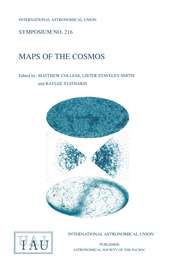Article contents
Polarization Observations of U Cephei
Published online by Cambridge University Press: 14 August 2015
Abstract
Polarimetric and photometric observations of U Cephei during the 1974-75 outburst are discussed. An optically thin envelope or disk cannot explain the observations. The polarization too small by a factor of 10, when compared with the amount of additional light during the totality of the eclipse of the B-star. This suggests that most of the additional light came from optically thick matter around the B-star, i.e. the effective radius of the photosphere of the B-star, rB, was increased by 15-20 % during the period of high mass transfer. The polarization observations could then be explained by a simple model containing an optically thin spherical envelope of outer radius 1.1 rB and an equatorial disk of outer radius 1.7 rB surrounding the expanded B-star. The mean electron density is about 1.4 × 1012 e/cm3 in the spherical envelope and 1.6 × 1012 e/cm3 in the preceding and 0.9 × 1012 e/cm3 in the trailing side of the disk, the thickness of which is assumed to be 0.1 rB normal to the orbital plane. The variations in the position angle can be explained if the inclination of the orbit is about 83°. The details will be published elsewhere.
- Type
- V. Algol and Algols
- Information
- Copyright
- Copyright © Reidel 1980
- 1
- Cited by


